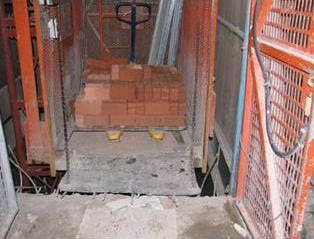Case 1 - Fall through Roof
A worker was found dead on the ground at the back of a factory unit. He had been assigned to repair the air-conditioning condenser unit on the external wall of the factory. He tried to access the condenser unit by climbing out of the window. As he stepped on the roof, he immediately fell 4.25m through the roofing material.

Case 2 - Fall from Formwork
A worker was working on the formwork of a 2-storey detached house. While receiving a reinforcement bar from another worker, he lost his balance and fell off the formwork to the ground 9.8m below. He was pronounced dead.
 Recommendations
Recommendations1. Prior to the start of work, conduct an adequate risk assessment to identify all potential hazards and the risks involved. Control measures and safe work procedures must be established and implemented.
2. Workers working at height (such as rooftop and formwork) should either be provided with an individual fall arrest system or a travel restraint system. This would include the use of safety harnesses, safety nets or safety belts. When using safety harnesses or safety belts, it must be securely anchored to a suitable anchor point or static line. Safety nets could also be slung close beneath the roof to protect workers from serious injuries.
3. Air-conditioning units may be installed on the ground level to eliminate the need for working at height. If the units must be located at height, safe and proper means of access to the external condenser unit must be provided.

4. Do not step directly onto the rooftops as the roofing material as it may not support the weight of a person. Instead, suitable working platforms such as cherry pickers and/or other safe means of accessing the roof should be utilised.
5. Whenever reasonably practicable, edge protection such as barricades or guard rails should be installed to provide protection against person falling off the formwork. The top rail must be at least 1m above the working surface.



